You’ve fired up your PC for a gaming session, but something’s off. Your GPU fan isn’t spinning, and you’re wondering why. Don’t worry; you’re not alone in this. It’s a common concern among PC users, and there’s a variety of reasons that could be causing it.
From software glitches to hardware hiccups, understanding the root cause is key to getting back into the game. Whether it’s a simple setting adjustment or a deeper issue, we’ll help you pinpoint what’s keeping your GPU fan at a standstill. Let’s dive into the common culprits and get those fans spinning again.
What To Do If My GPU Fans Are Not Spinning?
If your GPU fans aren’t spinning, don’t worry just yet.
First, check if they’re designed to spin only under a certain temperature threshold—it’s a common feature modern GPUs have and is mainly there to reduce noise.
If they should be spinning, try cleaning the fans for any dust buildup and ensure the power connectors are securely attached.
If issues persist, it might be a software setting or hardware failure, so consider checking the software fan controls or contacting the manufacturer for support.
Most Common Reason Why Your GPU Fans Aren’t Spinning
Understanding why your GPU fans aren’t spinning is essential to maintaining your PC’s performance and longevity. Let’s dig into some common issues that could be keeping your GPU fans idle.
GPU Silent Mode Activated
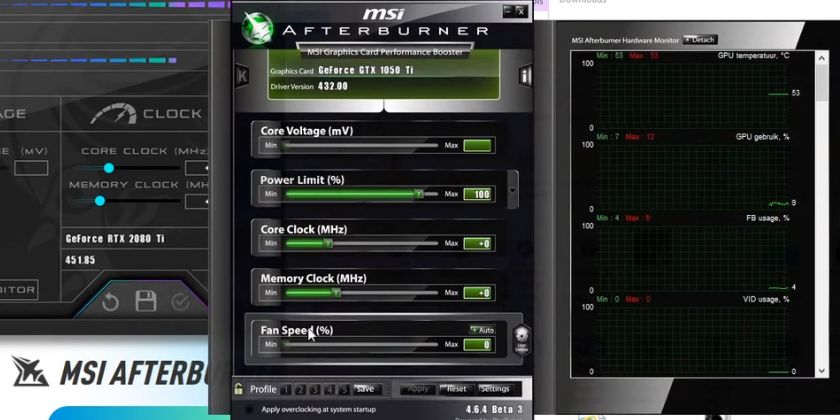
Silent mode, or zero RPM mode, is a feature in many graphics cards that keeps the fans stationary until the GPU reaches a certain temperature. This is designed to reduce system noise when your PC isn’t under heavy load. For instance, with an ASUS GPU, you might find a feature like the 0dB Fan option, which only activates the fans when the temperature exceeds a predefined threshold, such as 55 degrees Celsius. To adjust this, download your GPU’s manufacturer software and tweak the fan settings to your preference.
PCIe Power Cable Isn’t Plugged In
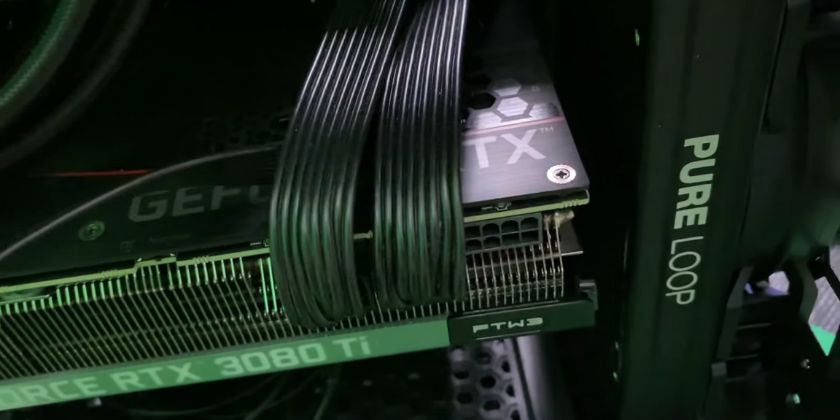
Modern gaming cards require more power than what the motherboard can provide. They need a direct power connection through a PCIe power cable. If your GPU fans are not spinning, one crucial step is to verify the PCIe power cables are connected properly. Double-check that all necessary power connectors are not only attached but also fully seated. Use the cables that came with your PSU to avoid compatibility issues.
Dust Build-Up on the GPU Fan Blades
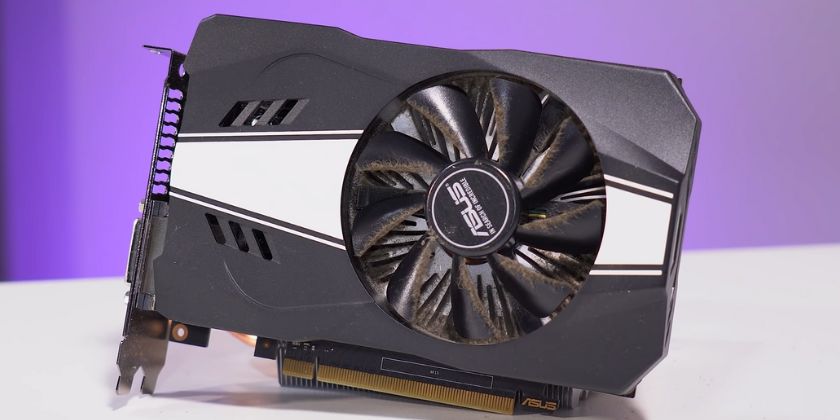
Dust accumulation is another factor that might prevent your GPU fans from spinning. Over time, dust and debris can obstruct the GPU fan blades, causing them to stick. It’s advisable to clean the GPU regularly using compressed air and a lint-free cloth to remove any dust build-up, especially before it becomes a larger problem. This maintenance step ensures that the fans can move freely, keeping your GPU temperature in check.
GPU Fan Bearings Need Oiling
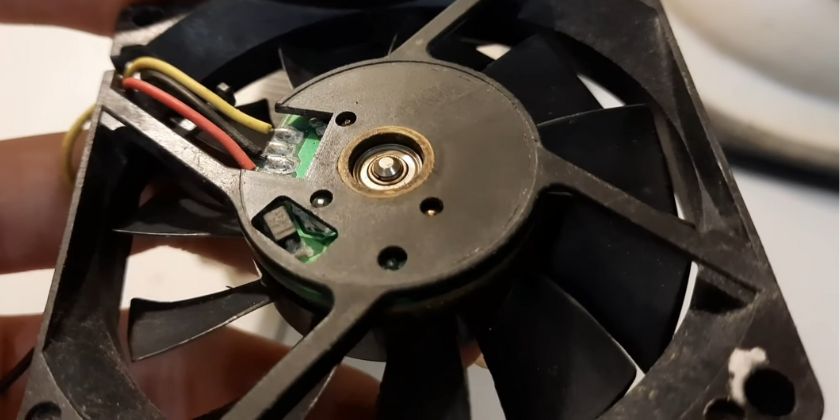
Another potential cause for GPU fans not spinning could be worn-out fan bearings. Over time and after prolonged use, the lubrication in the fan bearings may dry out, leading to increased friction and eventually causing the fan blades to halt. Applying a small amount of oil can rejuvenate the fan bearings and get them spinning effectively again. However, you should proceed with caution and consult manufacturer guidelines, as not all GPU fans are designed to be oiled by the user.
Dying GPU
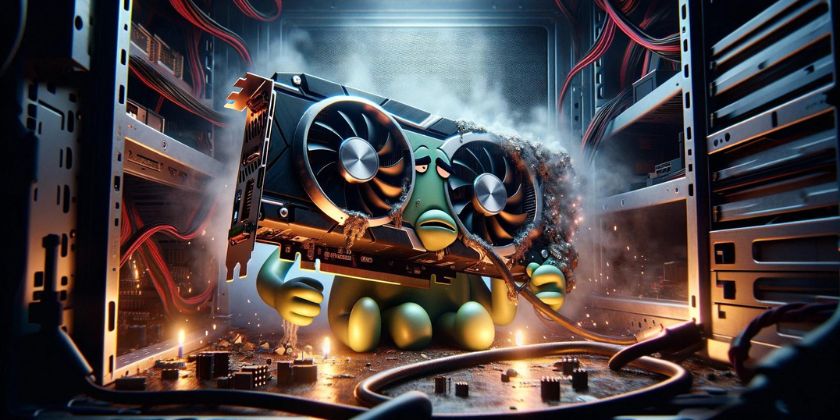
Regretfully, if none of the above solutions get your GPU fans moving, you might be dealing with a failing GPU. Signs that your GPU is dying can include consistent overheating, visual artifacts on the screen, and, of course, fans that won’t spin despite all other troubleshooting measures. If you suspect your GPU is at the end of its life cycle, it might be time to start researching a replacement.
Best Fixes for GPU Fans Not Spinning Issue
When you’re facing the perplexing issue of your GPU fans not spinning, there are a number of solutions you can try before considering replacement or professional repair. These fixes can resolve simple glitches or misconfigurations which could be causing your fan troubles.
Restart Your PC
It’s a basic step, but often a simple restart of your PC can clear up the problem causing your GPU fans to stop spinning. This action can resolve a myriad of software or OS-related bugs that may prevent your GPU fans from operating. To restart your PC, click the Windows button, then the power button, and select Restart. After your system boots up, check if the GPU fans have resumed spinning.
Adjust GPU Fan Curve
The fan curve settings are critical to manage. They dictate when your fans should start spinning based on the temperature your GPU reaches. Using software like MSI Afterburner, you can manually adjust the fan curve. To alter the fan curve, open the fan control software, locate the fan settings, and modify the curve so that your fans start spinning at a temperature that ensures your GPU is adequately cooled. Remember, a fan curve set too low could stop the fan from activating when it’s needed.
Check Power Cables
If your GPU fan isn’t spinning, it could be due to a power issue. Ensure all PCIe power cables are properly connected to your GPU as these cables provide the necessary power for the fans to operate. A loose or disconnected cable can prevent the fans from getting power, thus stopping them from spinning. Double-check the connections to make sure everything is snug and secure.
Re-install the GPU
An improperly seated GPU can be another culprit for fans not spinning. If the card is not correctly installed in the PCI slot, it may not function as intended. Remove the GPU and carefully re-install it into the slot, making sure it’s firmly and correctly seated. You’ll want to ensure that it’s locked in place, and all necessary screws are tightened.
Update/Roll Back GPU Drivers
Driver issues can impact fan performance. Updating or rolling back your GPU drivers to a stable release could fix the fan not spinning issue. Navigate to your GPU manufacturer’s website and download the latest drivers, or use driver software such as Driver Easy Pro if you prefer. If you’ve recently updated and started experiencing issues, consider rolling the drivers back to a previous version where the fans were operational.
Conclusion
Frequently Asked Questions
How do I know if my GPU is failing?
If you’re experiencing screen freezes, black screens, or blue screen errors, your GPU might be failing. These issues can also stem from malware, RAM problems, or a failing hard drive. Watch for lagging or stuttering visuals as another potential sign.
How do I fix my GPU fan not spinning?
Ensure all power cables are properly connected and your power supply is adequate. Dust accumulation can also cause the fans to stop; clean the fans if needed. Additionally, try manually spinning the fans to check if they’re stuck.
How hot is too hot for GPU?
For AMD GPUs, temperatures between 65 to 75 °C are considered normal. Anything above these indicates overheating. The upper limit for Nvidia GPUs is 95 to 100 °C, and for AMD GPUs, it is 90 to 100 °C.
How to check if GPU is working?
Open the Task Manager app from the Start menu on Windows 10 or 11. Under the “Performance” tab, select GPU to see graphics card performance metrics, including memory usage and temperature.
Will a dead GPU turn on?
A computer can boot up with a dead GPU, provided the GPU isn’t causing a short circuit. However, without a functioning GPU, you won’t be able to view any output on your monitor.
